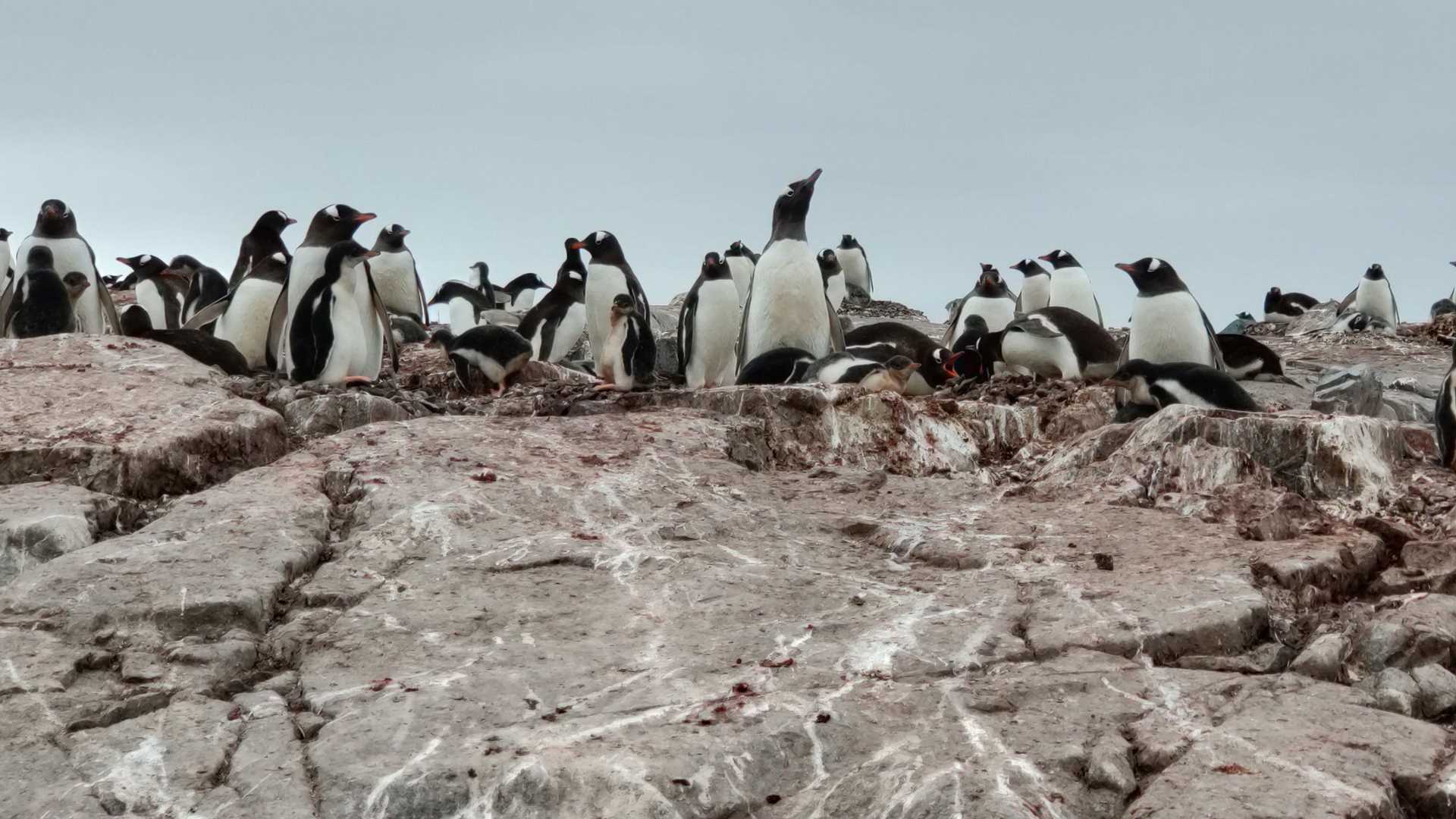We didn’t have to reposition our ship very far after yesterday’s activities, so we were ready to go early this morning. Right after breakfast, we went ashore on Petermann Island. This island has everything...a good landing, interesting history, neat geology, and plenty of wildlife. We landed in Circumcision Harbor, made famous by the French explorer Jean-Baptiste Charcot who overwintered here aboard Pourquoi-Pas? in 1909 during the Second French Antarctic Expedition. This site was chosen because it afforded the ship protection from ice bergs. It was a scientific undertaking and Charcot set up four huts onshore from which to conduct the important studies. He erected a cairn high on the hill behind the landing site commemorating this event. It is interesting to note that when Charcot was here, there was a large Adelie penguin colony at Petermann Island. Today, the Adélies have almost been completely replaced by gentoos, although a small Adélie colony still resides. An abandoned Argentine refuge hut is near the landing, but it was put here many decades after Charcot’s presence. There is also a memorial cross near the shoreline dedicated to three BAS scientists working on Petermann Island who perished here among the ice floes in 1982.
Physically, the island is mostly covered with snow and ice. Even so, it offers very good hiking and climbing, as well as some great views. The exposed glacially-smoothed bedrock looks like granite, but geologists qualify this kind of rock as syenite. It is similar in most respects to granite but contains little to no quartz and has a light gray appearance. We noted many xenoliths, or dark inclusions, in the exposed rock.
In the early afternoon, we hove toward Booth Island, just a few miles north of Petermann. Booth was the site of Jean-Baptiste Charcot’s first French Antarctic Expedition (1903–1905). This scientific expedition purposely overwintered its ship Francais in a bay on the north side of Booth Island in 1903. It is an important penguin breeding site and is used by Adelie penguins and gentoo penguins, like we saw on Petermann Island, but is also used by chinstrap penguins. It should be no surprise that most of the place names in this vicinity are from Charcot’s explorations.
The area just to the west of Booth and near the northern end of Pleneau Island – named after the engineer who accompanied Charcot on his second Antarctic expedition – is known as Iceberg Graveyard. This region is also called Port Charcot. Bergs float in here from the Bellingshausen Sea and become grounded, which traps them until they break up and degrade over time. This is a great place for exploring with kayaks and Zodiacs. And, that is exactly what we did all afternoon. It is remarkable how many variations and different shapes we saw among the ice bergs. We felt we were in an Ice National Park, or better yet, an Ice International Park. Many of them even reminded us of objects, places, animals, people, etc. Some examples include the likes of Mount Rushmore, a sphinx, and a jellyfish. There were many that simply defied any meaningful comparison. There was also plenty of interesting wildlife in amongst the bergs, including kelp gulls, brown skuas, giant petrels, blue-eyed shags, Antarctic terns, snowy sheathbills, crabeater seals, leopard seals, and a minke whale.
Once we finished exploring with our kayaks and Zodiacs, our ship slipped around the southern end of Booth Island and entered the Lemaire Channel. This waterway, located between the peninsular mainland and Booth Island, is surely one of the prettiest spots in Antarctica. It measures about one mile wide by about seven miles in length and the walls consist of high, steep, snow-covered mountains with many glaciers lining the way. It took the better part of an hour to make the transit and nearly everyone was out on deck appreciating the scenery.
After dinner, there were more highlights added to the day’s activities. Right after dinner, we encountered a pod of killer whales! They were identified as Type B-2 Gerlache killer whales, noted for their ability to catch and consume penguins. And then, until the wee hours of the night, we were regaled and entertained by members of our and illustrious crew. Who knew there was so much talent hidden among our shipboard compatriots?







